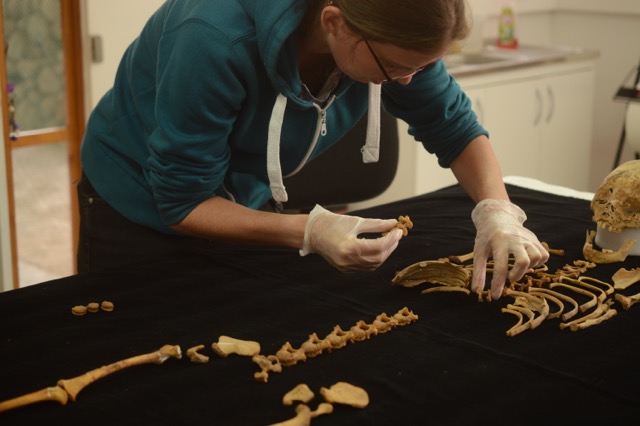Award Holder: Gail Elliott
University: University of Otago
Title of Research: Agricultural Effects on Skeletal and Dental Growth and Maturation in Prehistoric Populations from Northern Chile.
Around 9,000 years ago, the advent and intensification of agriculture revolutionized all aspects of human society including population sizes, technological development and social complexity. Although these changes have led to a romanticized view that agriculture has had a positive impact on living standards and human health, this could not be further from the truth. With the advent of agriculture in some parts of the world, the increase in population size led to unsanitary conditions, and the spread of diseases, which had a detrimental effect on physical health. This has resulted in the development of a universally applied bioarchaeological model predicting an overall deterioration in physical health with the adoption of agriculture, derived mainly from studies in North America and Europe. The model posits that there was a reduction in nutrition through a decrease in dietary variation, poor sanitation as a result of sedentism and large population sizes, and an easy spread of diseases through close living conditions. Consequently, agricultural populations had a greater incidence of infection and disease with reduced nutrition also contributing to an increased susceptibility as immune responses were weakened by poor diet. However, studies from different regions contradict these findings, reporting sustained or improved health with agriculture, suggesting further region-specific testing of the model is necessary.
Bioarchaeology, the study of human remains from archaeological sites, is the only way in which we can directly assess the impact of the agricultural transition on people themselves. My goal for this research visit was to apply widely accepted metric techniques to study skeletal and dental growth of prehistoric infants and children as a proxy for physical health to test this bioarchaeological model. The skeletal collection represents carefully documented cultural chronologies from three Pacific coastal valleys in the Atacama Desert, northern Chile. The advent of agricultural development (ca. 2500 B.P.) in this region has been established through archaeobotanical evidence. Thanks to the support of the Royal Anthropological Institute, I was able to travel and study this skeletal sample curated at the Museo San Miguel Azapa in Arica, northern Chile.
My fieldwork went very well though not without the challenge of a language barrier. Although I have taken a Spanish paper at university in preparation for my visit, I was not prepared for the speed and pronunciation of delivery in Arica. Fortunately, the laboratory technicians I worked with were incredibly patient and Google Translate rescued us all. I was also able reciprocate the kindness shown to me by helping to resolve instances where mixing of the skeletal sample had occurred during their curation.
Despite the language barrier, I had an incredible experience in Arica. In hindsight, it was so important to understand the geographical and cultural history and contexts that are significant components of my work. I have only just begun the statistical analyses, but I hope that my research will make a significant contribution to the debate surrounding the bioarchaeological model and to the literature regarding these prehistoric populations. I am sincerely grateful to the RAI for supporting my research. This research project is also funded by a New Zealand Marsden Grant (UOO1413) awarded to Sian Halcrow.


